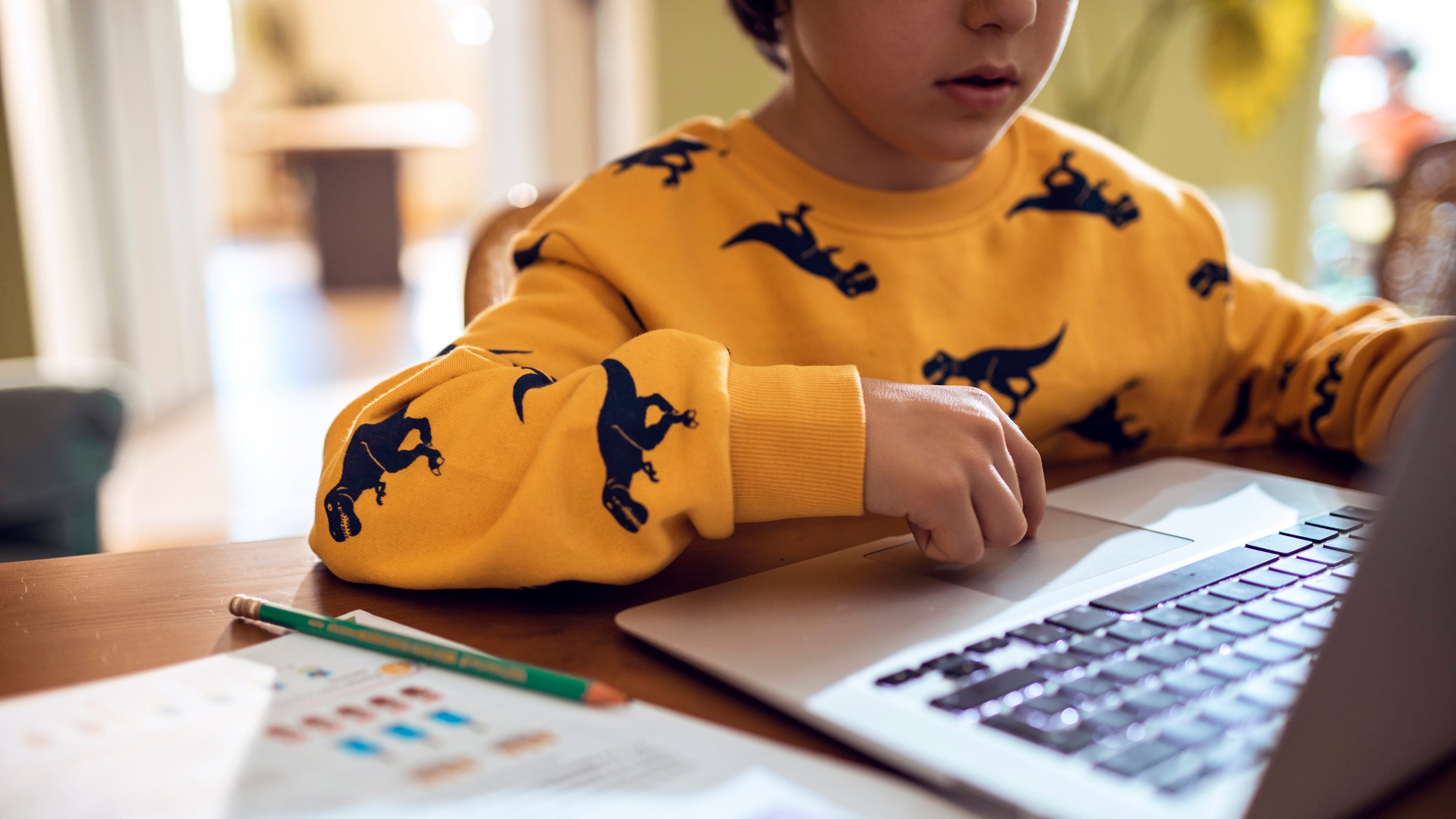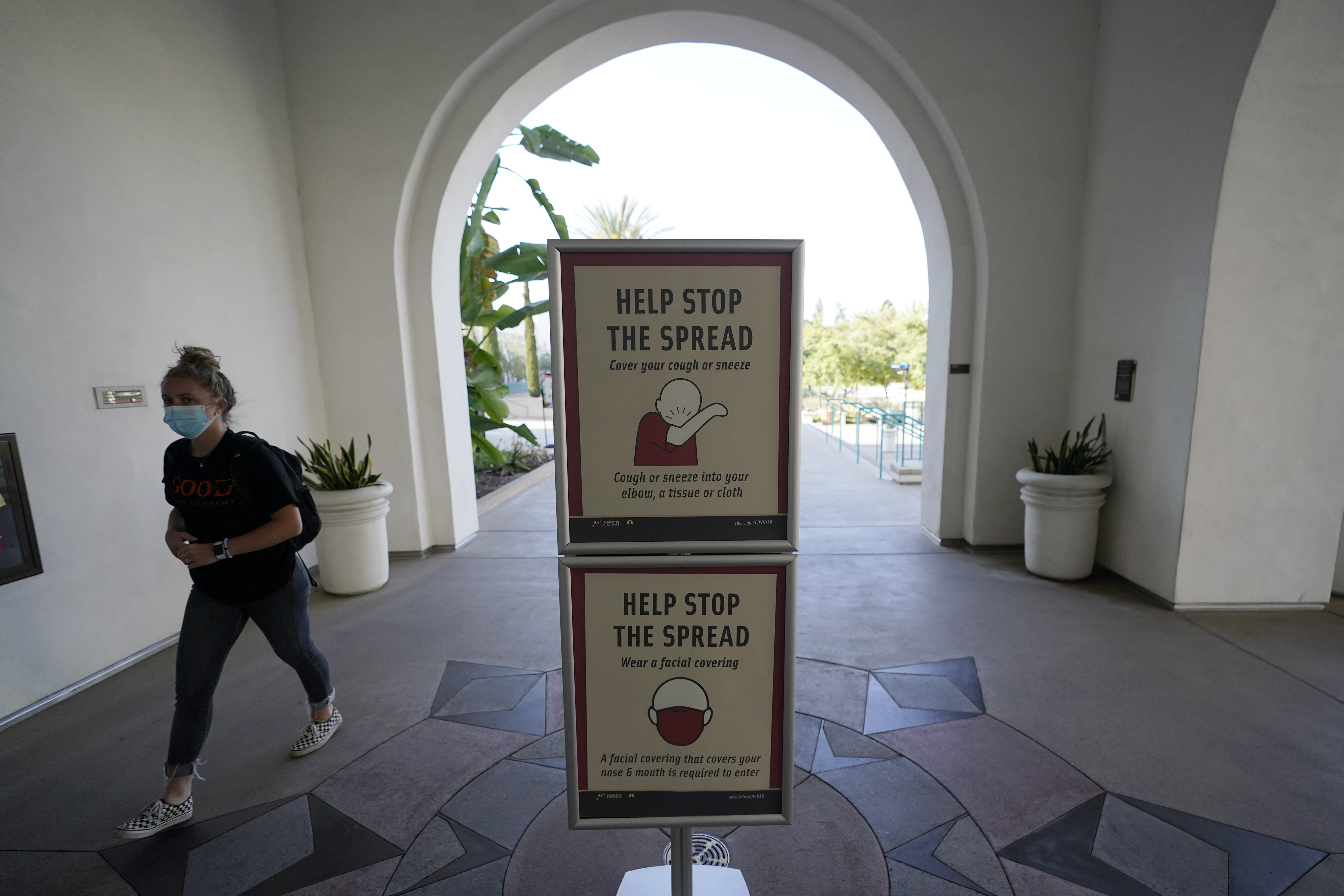For the more than 3,000 blind or deaf students who will be attending local public schools virtually this fall, distance learning creates an added complication for those students, their families and their teachers, according to an investigation by the News4 I-Team.
Virtual classes, ordered to reduce the risk of the spread of COVID-19, shift many of the challenges and burdens of educating children from public school professionals to parents and in-home caregivers. Blind and deaf students will lose access to in-person resource teachers who help those children navigate lessons and videos provided in class.
We're making it easier for you to find stories that matter with our new newsletter — The 4Front. Sign up here and get news that is important for you to your inbox.
"It's intimidating. Not just learning the subject, but how to navigate her computer," said Teresa Graham, whose daughter, Naudia, is blind and begins freshman year at Centennial High School in Howard County, Maryland, this week.
Graham said she will help her daughter translate and comprehend the online classes but expects to hit a series of stumbling blocks along the way. Graham said she is not a certified teacher and said some of the online classroom materials are not expected to be a properly translated for blind students.
Adrian Pidlusky, whose six-year-old son, Mark, is hard of hearing and will attend virtual classes at his elementary school in Annandale, Virginia, said online classes are going to be a particular challenge for his son.
"A child’s attention span is only so much. And with hearing loss, it's even less, typically, if they don't understand what's going on," Pidlusky said.
Using the Freedom of Information Act, the News4 I-Team requested data on the number of local students who have qualified for Individualized Education programs, or IEPs, for vision impairments and hearing loss or deafness. IEPs are federally guaranteed support programs provided by school systems to students with disabilities.
The I-Team review found several hundred students with vision or hearing IEPs in Maryland, including 44 students each in Prince George's and Howard counties for vision impairments. In Virginia, the I-Team found nearly 1,800 students with vision and hearing disabilities. Several dozens students are impacted in Fairfax County. In the smaller Fauquier County Public School district, 33 students had one of those two impairments and qualified for IEPs.
At least 33 D.C. Public Schools students have IEPs for "sensory impairments," according to records provided by DCPS.
School districts are providing assistive technology devices for these students.
Graham said Howard County Public Schools provided her daughter with a braille note-taking device, braille math-assisting device and a small device to take notes by hand. The combined technology costs an estimated $7,000 and has been sent home for virtual learning, Graham said. She said her daughter, Naudia, is also using a talking graphic calculator for math classes.
Howard County Public Schools superintendent Michael Martirano said the district will attempt to provide home visits and phone calls to provide one-on-one assistance to assist these students.
"We have to make sure our most vulnerable students who need support get the support," Martirano said. "It's one thing to provide technology, but another thing to be sure you're providing it with the appropriate level of care and support."
Shira Brothers, an administrator with Fairfax County Public Schools, said educators are working with parents and caregivers of students with disabilities to help them prepare for the unique challenges of virtual learning.
"Teachers of the deaf, hard of hearing and visually impaired really have to include parents and caregivers into those roles ... and teach them what we do ... so we can help those students," Brothers said.
Video cueing and sign language interpretation are being offered for online classes for deaf students, according to all local school districts surveyed by the I-Team.
A spokesman for D.C. Public Schools said the district offered a series of training sessions for parents with students who have IEPs.
"DCPS will collaborate with families on distance learning plans and general education teachers to ensure educational content is accessible and accommodating materials prior to lessons," the spokesman said.
A spokeswoman for U.S. Education Secretary Betsy DeVos said the federal government is supporting efforts to serve students with disabilities. In a statement, she said, “The Department issued guidance to help facilitate this, which pointed out flexibilities schools have when educating students remotely. For instance, a teacher and student could communicate using American Sign Language via videoconference. Learning materials written in Braille can be delivered to a blind student. In some instances, services can be provided in person outside of school when social distancing and other safety measures are in place. Secretary DeVos has said many times that families deserve a choice in how and where their children learn. The CDC has issued guidelines for schools to reopen safely, and there's proof it can be done - many schools are doing so across the country."
Naudia Graham said her mother is eager to help but intimidated by some of the math lessons.
"It's harder for her, because she doesn't understand what I’m learning," she said. Graham said she and her mom will find a way to surmount the obstacles of online learning and said she's nevertheless excited to be starting high school.



